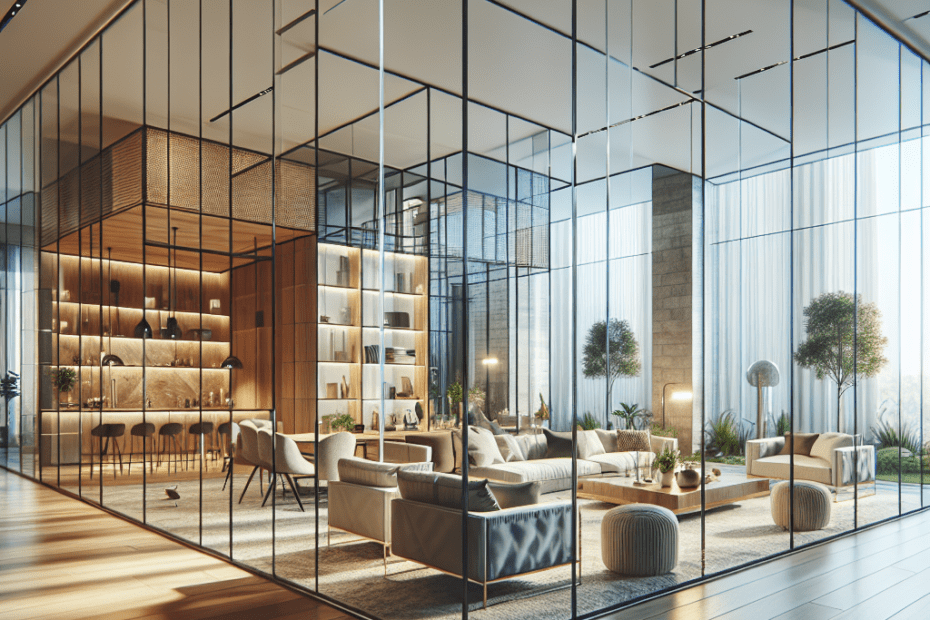Introduction
They marvel at the soaring trend in home design that’s redefining living spaces: glass partitions in open-concept designs. More homeowners are seeking ways to balance openness with privacy, and these transparent barriers are emerging as a sophisticated solution. According to a report from Houzz, 23% of homeowners are incorporating glass partitions in their renovation projects, showcasing their growing popularity.
Understanding Open-Concept Design
Open-concept design is all about lean spaces with minimal barriers. This style removes traditional walls to create a sense of unity and continuity in homes. While early versions of the concept tended to leave rooms entirely open to each other, modern variations often incorporate strategic partitions to keep a degree of separation. That’s where glass partitions offer their unique advantages.
Why Glass Partitions?
Glass partitions introduce flexibility into open-concept homes. Unlike solid walls, they allow light to flow freely, preserving the spacious feel that open-design concepts are known for. Here’s what makes glass partitions stand out:
| Feature | Benefit |
|---|---|
| Transparency | Maintains visual connection while providing acoustic separation |
| Versatility | Can be framed, frameless, frosted, or even tinted for style variations |
| Light dispersion | Natural light permeates, reducing dependency on artificial light |
| Contemporary aesthetics | Modernizes the look of any interior, blending with various design themes |
The Psychological Impact of Glass Partitions
The use of glass partitions in open-concept homes also appeals to psychological needs. While open spaces foster interaction and a sense of connectedness, they can also lead to overstimulation. Glass partitions can mitigate this by creating visual boundaries. According to the Journal of Environmental Psychology, individuals thrive in environments that provide both connection and subtle containment.
Glass Partitions in Different Spaces
Living room to Kitchen: This combination is popular in open-concept designs. Glass allows visual flow while containing heat and noise from kitchen activities.
Home Office: As remote work becomes more common, using glass to partition a home office provides privacy without isolation.
Bedroom to Bathroom: In luxurious homes, glass separators can demarcate these areas without enclosing them entirely, adding a touch of sophistication.
Installation and Maintenance
When installing glass partitions, safety is a priority. Tempered glass, which is 4-5 times stronger than regular glass, is recommended. It’s crucial to hire professionals to ensure proper installation. For maintenance, regular cleaning with glass cleaners keeps them spotless, while checking the frames helps maintain their structural integrity.
Eco-Friendly Aspects
Glass partitions can contribute to eco-friendly living by maximizing natural light usage, thus reducing the need for daytime artificial lighting. Some homeowners opt for eco-friendly glass made from recycled materials, minimizing their carbon footprint. Organizations like the U.S. Department of Energy advocate for designs that enhance energy efficiency, and glass partitions fit this ethos well.
Key Takeaways
- Glass partitions balance openness and privacy, preserving the spacious feel of open-concept designs.
- They have psychological benefits, providing both connection and containment.
- They can be used effectively in kitchens, home offices, and between bedrooms and bathrooms.
- Eco-friendly installations can improve energy efficiency.
FAQ
- What is an open-concept design?
An open-concept design eliminates most walls to create a spacious, interconnected living area. - Why use glass partitions?
They provide separation without blocking light and offer modern aesthetics while maintaining privacy. - Are glass partitions safe?
Yes, when made from tempered glass and properly installed, they are durable and safe. - How do you maintain glass partitions?
Regular cleaning with glass cleaners and checking the frames for integrity keeps them in good condition. - Do glass partitions help save energy?
Yes, by allowing natural light to flow throughout the home, they reduce the need for artificial lighting.
